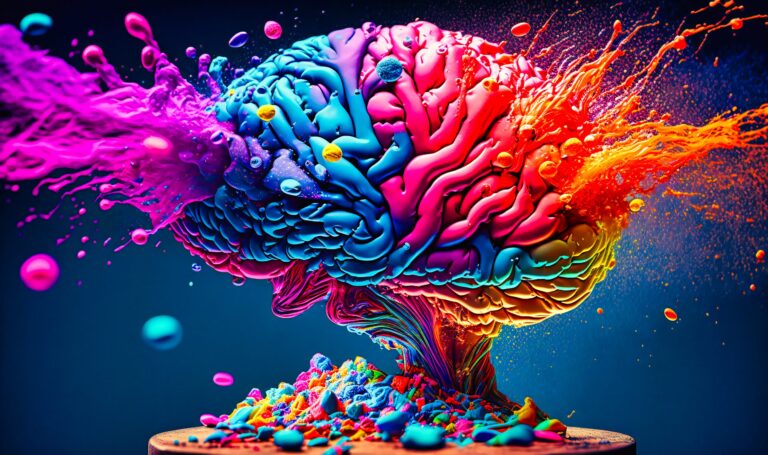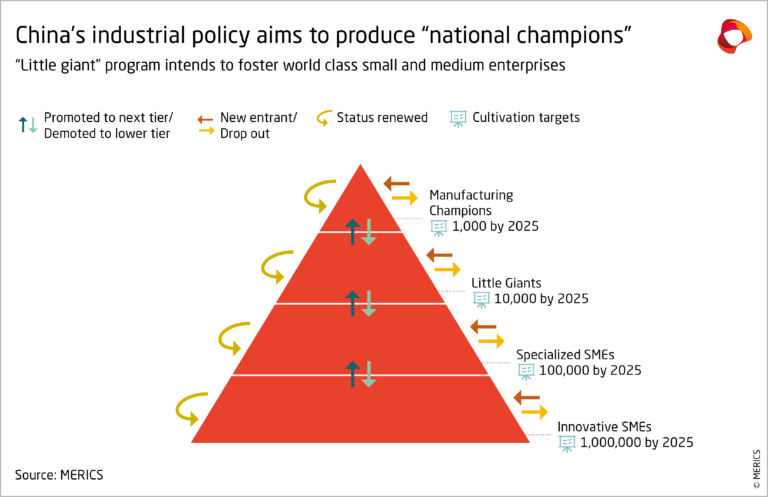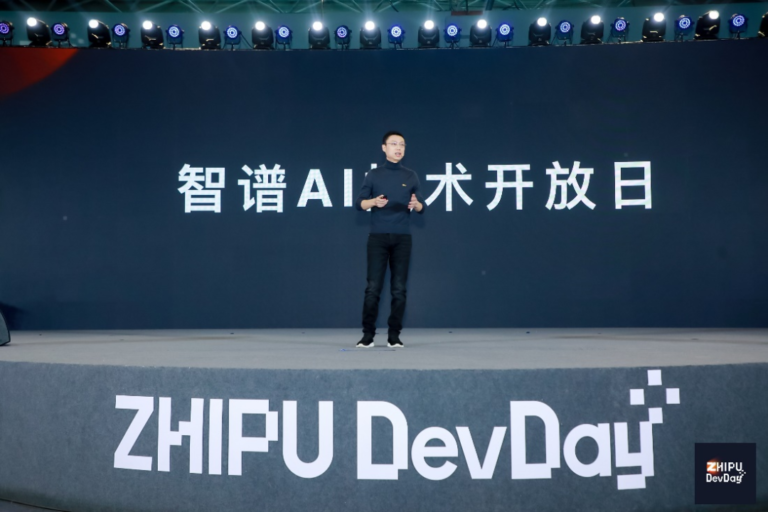
Wu Dao and the Chinese Artificial Intelligence Ecosystem
The competition between China and the United States is all-encompassing. It spans industrial, military, geopolitical, and commercial sectors. At the same time, it is also happening in the technological domain. The two giants of innovation (China is no longer just catching up; from being an innovation lab, it has now become a major international player) are also vying for leadership in the field of artificial intelligence.
In this article, we will introduce some models and their evolution over time, along with future perspectives and, as always, our final point of view.

1. Artificial Intelligence in China – A World with Chinese Characteristics
The AI industry in China is continuously evolving (as it is worldwide), but in China, the quintessentially evolving country, this progression is happening at an accelerated pace. Not only are billions of yuan at stake—naturally attracting entrepreneurs, experts, academics, and investors—but also the future leadership of a sector that promises to revolutionize our lives. China, on one hand, “missed out” on two major industrial revolutions—the British and the American—and does not want to play a secondary role in the current, ongoing revolution. On the other hand, it has the capability, numbers, and market to leave an indelible mark on the development of such a powerful technology.
Planning and the role played by China’s “technocratic” leadership is fundamental in this sector as well. Over the years, the Chinese government has identified the “National AI Team,” which includes 15 China-based companies such as Baidu, Tencent, Alibaba, SenseTime, and iFlutek. Each of these companies was initially tasked with developing a specific area of AI in China, such as facial recognition, software/hardware development, and speech recognition.
As a result, in recent years, new technologies have been developed in a “scientific” manner within the country, which boasts the highest number of internet users in the world. This allows for a “machine learning” process with a staggering amount of data. China has become a vast laboratory for AI.
Over the years, numerous AI-related policies have been launched in China. Among them are the comprehensive “Made in China 2025” strategy (2015), the “Internet+AI Three-Year Implementation Plan” (2016), the “Guidelines for Building an Open National Innovation Platform for New Generation Artificial Intelligence” (2019), the “Ethical Code for a New Generation of Artificial Intelligence” (2021), and the “Chinese Data Security Law” (2023).
The key AI sectors in which the Chinese state has heavily invested in recent years include facial recognition, biotechnology, quantum computing, medical intelligence, and autonomous vehicles.
By 2023, the number of Chinese AI “champion” companies has reached 15, and the list has been updated three times since the first announcement in 2017. Notably, the latest update in 2019 added companies such as Yitu, Minglamp Technology, Huawei, Pingan, Hikvision, JD.com, Megvii, Qihoo 360, TAL Education Group, and Xiaomi to the list.

2. Wu Dao and Its Siblings – An Artificial Intelligence Ecosystem
In 2021, the Beijing Academy of Artificial Intelligence released the world’s largest pre-trained language model, called “Wu Dao.”
It has been compared to GPT-3 and is built on a similar architecture; however, GPT-3 has 175 billion variable parameters and inputs within its machine learning model, while Wu Dao has 1.75 trillion parameters. Wu Dao’s creators demonstrated its ability to perform natural language processing and image recognition, as well as text and image generation. The model can not only write essays, poems, and couplets in traditional Chinese, but also generate alternative text based on a static image and create nearly photorealistic images from natural language descriptions. Wu Dao has also shown its ability to power virtual idols (with some help from Microsoft’s spinoff Xiaoice) and predict the 3D structures of proteins, similar to AlphaFold.
Wu Dao has contributed to forming a parallel universe and AI ecosystem in China, which has been structured over the years, governed by leadership, and scientifically funded, designed, and implemented in the People’s Republic of China. In some ways, we might dare to call this system an “intelligent intranet,” managed by a grand CEO—the Secretary of the Party.
Wu Dao was later updated, and at the same time that version 2.0 was launched, the creators also produced the first virtual student, who enrolled in the Computer Science and Technology Department at Tsinghua University. Her name is Hua Zhibing, and she is the embodiment of the Wu Dao model, capable of learning from any type of data and improving through learning. Miss Hua can compose music, reason, respond to emotions, answer questions, and even code. She was co-developed by the Beijing Academy of Artificial Intelligence, the Tsinghua spin-off Zhipu AI, and Microsoft’s Xiaoice chatbot in Asia.
As for generative artificial intelligence, China has developed its own world with “Chinese characteristics,” featuring its own companies and innovations. Examples include Baidu’s ERNIE-ViLG, a model with 10 billion parameters trained on a dataset of 145 billion Chinese image-text pairs, and Tencent’s “Different Dimension Me,” which can transform photos of people into anime characters. Finally, another large-scale text-to-image model is Taiyi, the product of the IDEA research center, led by Harry Shum, co-founder of Microsoft Research Asia.
One of the drivers of endogenous innovation in Chinese AI might paradoxically be the application of export controls on high-end AI chips. This could force China to invest in the long-term development of its own technology, facing short-term challenges but potentially closing the gap in the medium and long term. However, in the AI race, there are no apparent certainties.

3. Zhipu AI and Chat GLM – Funding, Competition, and Promises
Founded in 2019, Zhipu AI is one of the first companies in China to enter the field of large-scale models. It has also become one of the leading national producers of large-scale models. In March 2023, Zhipu AI launched the billion-scale conversational model Chat GLM and completed four updates in the past year.
Building on its self-developed large-scale model capabilities, Zhipu AI has also created a matrix of AIGC (AI-generated content) products, including the high-efficiency code model CodeGeeX, the multimodal understanding model CogVLM, and the text-image understanding model CogView.
In recent months, Zhipu AI has made headlines for two reasons: the massive amount of investments it has attracted from Chinese companies and funds, and the announcement of a new, updated version of its flagship technology, Chat GLM 4.
In terms of funding, major Chinese players such as Meituan, the food delivery giant, Qiming Venture Partners, Legend Capital, and Tsinghua Holdings have invested hundreds of millions of yuan in the company. (In the case of Meituan, as reported by several Chinese online newspapers, the investment followed its acquisition of another LLM player, Light Years Beyond, for $234 million.) Another funding round took place in October 2023, with investments from the Social Security Fund, Zhongguancun Independent Innovation Fund, Meituan, Alibaba, Tencent, Xiaomi, Kingsoft, Sequoia, and Gaorong, among others. A new round of funding was closed in March this year, involving the Beijing Artificial Intelligence Industry Investment Fund.
The second headline is even more significant, hinting at a breakthrough and a parallel rival to ChatGPT-4. In January 2024, Zhipu AI’s CEO, Zhang Peng, unveiled the company’s new product during the “Zhipu DevDay” in Beijing. At the same event, the company announced it was developing technology similar to “Sora” in its pursuit of creating general artificial intelligence
4. Our Point of View
As with previous articles written for Agenda Digitale, we will conclude with some of our own considerations.
China and the United States as Global AI Leaders
There is no doubt that China and the United States are the international leaders in the field of artificial intelligence. The two “models” (if they can be called models) differ significantly: one is characterized by the strong presence of private companies, while the other highlights the key role of academic institutions (particularly those in Beijing, such as the renowned Tsinghua University) and public companies.
The Role of Chinese Planning
China’s current AI ecosystem is the result of years of medium- and long-term planning by the Chinese leadership. Will this continue to be the case in the future? It is likely that Chinese companies and technologies will follow a “controlled” development path, without rushing ahead.
Europe’s Role
If it’s not already too late to ask this question, what role can the European Union and companies from the old continent play? The future of the world hinges on this technology, and if European nations want to remain relevant, a significant shift is needed.
Written by Marco Bonaglia and Antonio Frisoli



